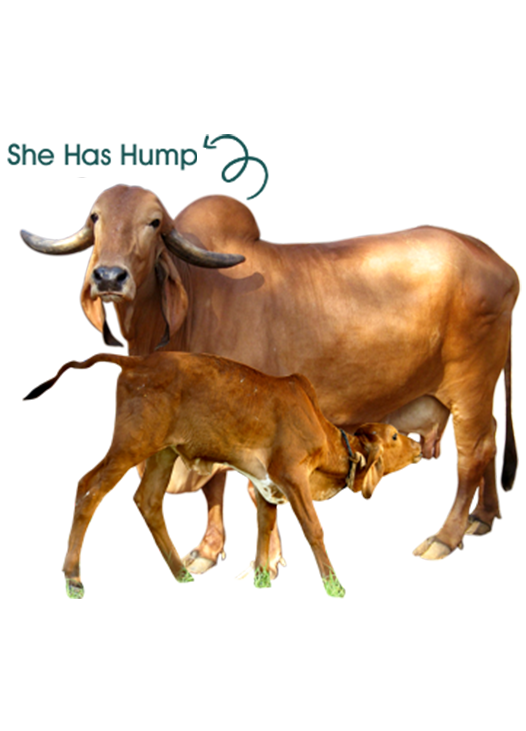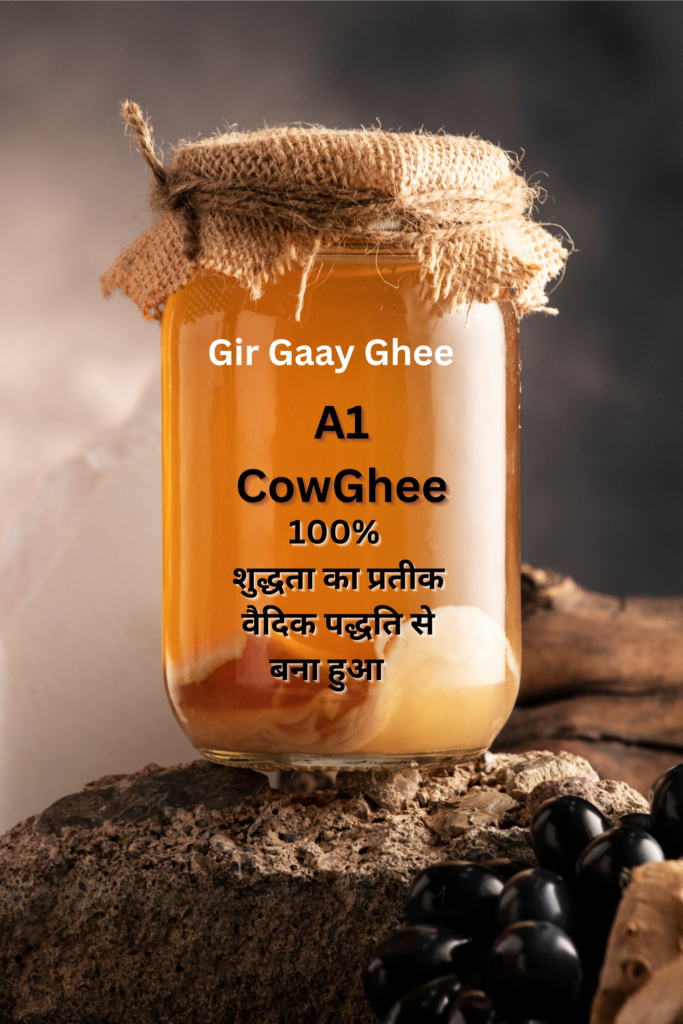A1 cow ghee refers to ghee that is made from the milk of cows that predominantly produce A1 beta-casein protein. Cows’ milk can contain two main types of beta-casein protein: A1 and A2. The distinction between these proteins is a small genetic variation that can affect how some people digest the milk. Some studies suggest that A2 milk might be easier to digest for some people compared to milk containing A1 beta-casein, although more research is needed to fully understand these effects.
Ghee is a type of clarified butter that originated in ancient India and is widely used in South Asian and Middle Eastern cuisines, traditional medicine, and religious rituals. It is made by melting butter and separating the milk solids and water from the fats, resulting in a concentrated form of fat that has a high smoke point and a rich, nutty flavor.
Regarding A1 cow ghee specifically, it is simply ghee made from the milk of cows that produce the A1 type of protein. It is used in the same ways as any other ghee but is distinguished by the source of the milk. When choosing between A1 and A2 ghee (or milk), the decision might come down to personal health considerations, dietary restrictions, or taste preferences.
It’s important to note that the benefits of ghee include being a rich source of vitamins A, E, and D (in cows fed on high-quality, green pasture), and it is free from lactose and casein once fully clarified, which can make it suitable for individuals with lactose intolerance or those avoiding casein for health reasons. However, the distinctions between A1 and A2 might still be significant for some people in terms of digestion and health effects. Always consult with a healthcare provider for advice tailored to your personal health and dietary needs.


A1 cow ghee refers to ghee that is made from the milk of cows that predominantly produce A1 beta-casein protein. Cows’ milk can contain two main types of beta-casein protein: A1 and A2. The distinction between these proteins is a small genetic variation that can affect how some people digest the milk. Some studies suggest that A2 milk might be easier to digest for some people compared to milk containing A1 beta-casein, although more research is needed to fully understand these effects.
Ghee is a type of clarified butter that originated in ancient India and is widely used in South Asian and Middle Eastern cuisines, traditional medicine, and religious rituals. It is made by melting butter and separating the milk solids and water from the fats, resulting in a concentrated form of fat that has a high smoke point and a rich, nutty flavor.
Regarding A1 cow ghee specifically, it is simply ghee made from the milk of cows that produce the A1 type of protein. It is used in the same ways as any other ghee but is distinguished by the source of the milk. When choosing between A1 and A2 ghee (or milk), the decision might come down to personal health considerations, dietary restrictions, or taste preferences.
It’s important to note that the benefits of ghee include being a rich source of vitamins A, E, and D (in cows fed on high-quality, green pasture), and it is free from lactose and casein once fully clarified, which can make it suitable for individuals with lactose intolerance or those avoiding casein for health reasons. However, the distinctions between A1 and A2 might still be significant for some people in terms of digestion and health effects. Always consult with a healthcare provider for advice tailored to your personal health and dietary needs.



